These aren’t drives you see everyday. The Toshiba MK-232FC & MK-234FC models (alongside their alternative interface counterparts) are some of Toshiba’s earliest voice-coil driven hard drives from the very late 80’s, being released in December of 1989. I purchased these in a lot from Yahoo Auctions out of Japan, alongside another 6 early Toshiba drives. Sadly, the two MK-234FC’s from the squad are dead, but the single MK-232FC in the lot seems to be working just fine. Since these have failed, we can dive into these a little further than with most drives from the period.
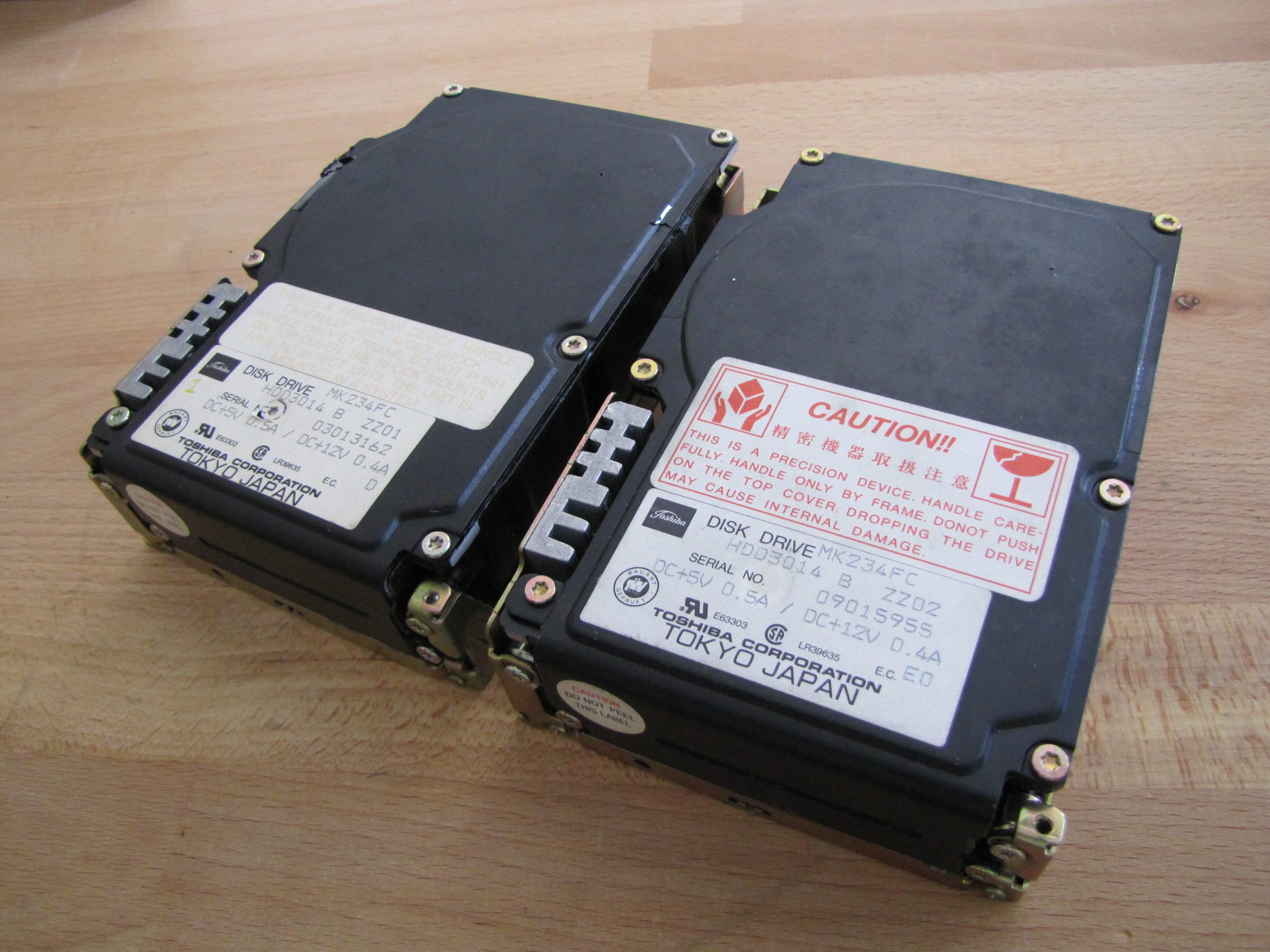
Drive Attributes ------------------------------------- Toshiba MK-234FC ------------------------------------- Capacity 101MB Mfc Date 1989-1993 Format 3.5" (full-height) Interface PATA Platters 4 Heads 7 RPM 3600 CHS 845/7/35 (native) -------------------------------------
These are incredibly chunky full-height 3.5″ drives, being very early IDE interface compatible drives to boot. The two drives I have have different labelling styles concerning their environmental warnings, which is a little particular. I would hazard a guess that this changed sometime during 1989/1990, making one of the two a bit newer than the other. The original design is from 1989, making the older label type a touch more uncommon. Both were clearly made in Tokyo, Japan.
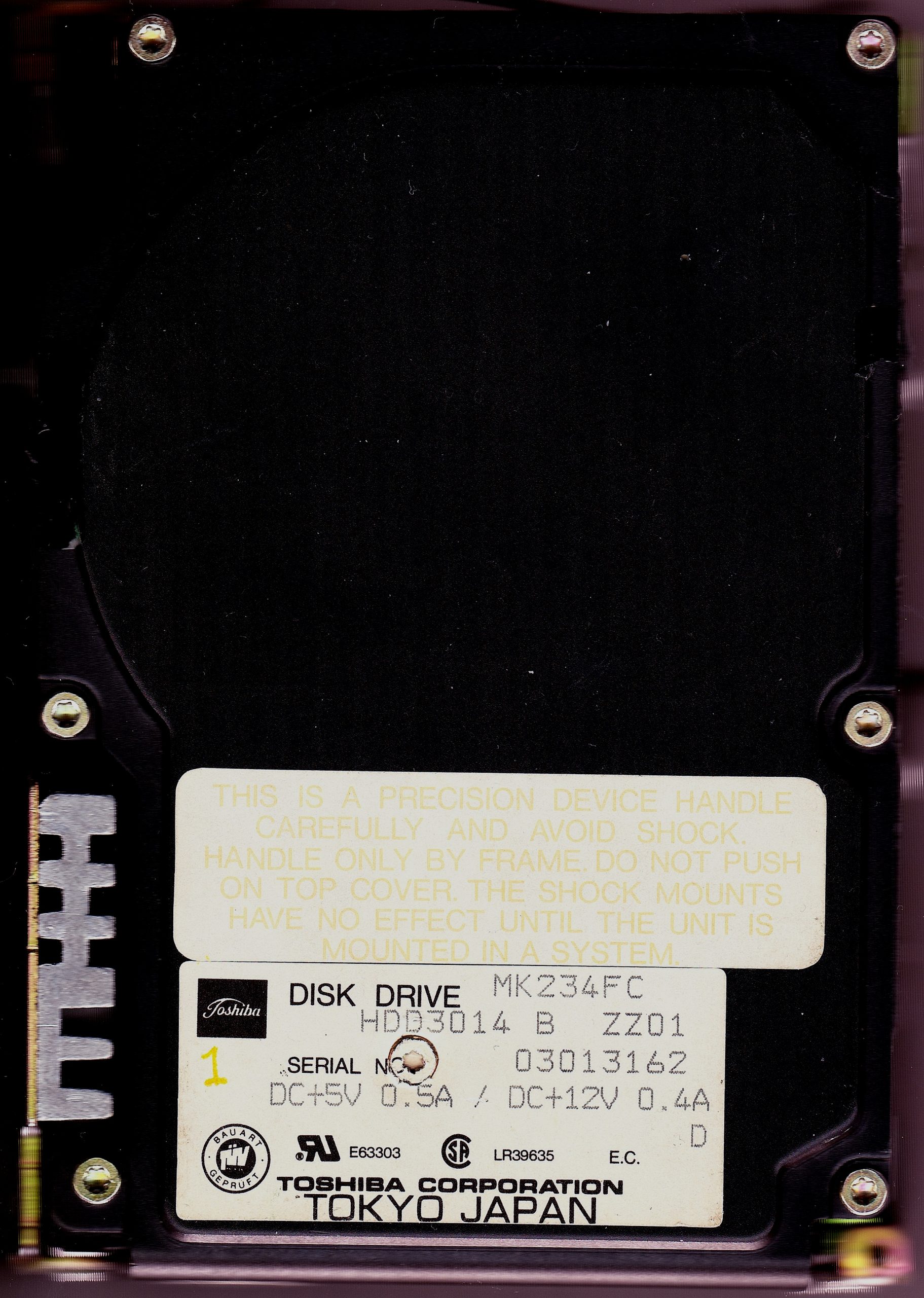
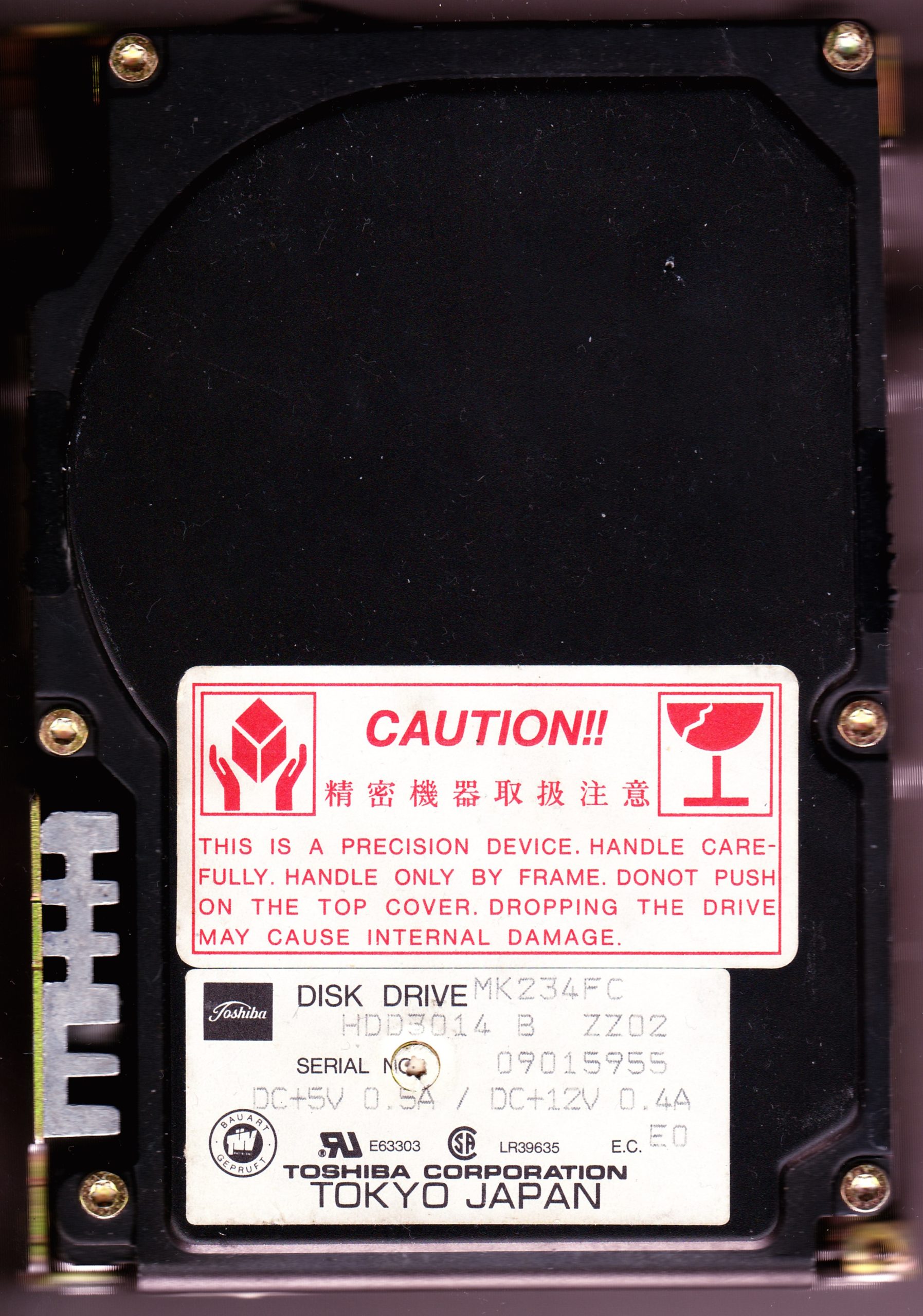
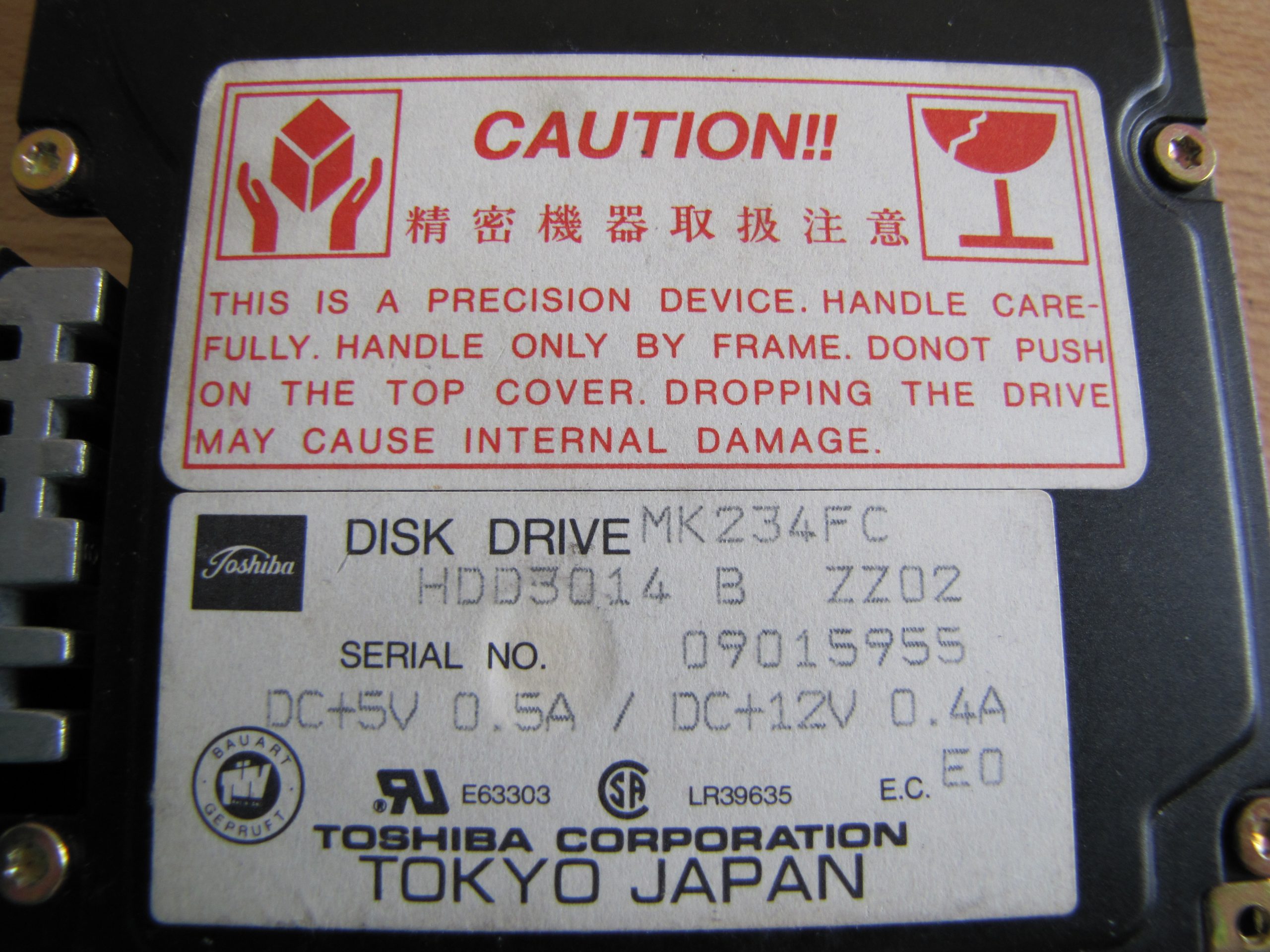
Having a closer look at the more legible label of the two, the handling warning has several rather humerous grammar mistakes, but definitely gets the point across. We’re greeted by the older Toshiba logo, used on most of their drives until the late 90’s/early 2000’s.
It seems that Toshiba dipped out of the 3.5″ race pretty quickly, where the last drive they seemed to advertise was the MK-1034FC (coincidentally a drive I also got in this lot, which fortunately works fine). That drive came out in 1992, so it can be said that Toshiba primarily shifted to only producing 2.5″ drives from thereon, until coming back swinging in the early 2010’s with the Fujitsu (and semi-HGST) acquisition. These remained in production during the MK-1034FC‘s release, although not for long.
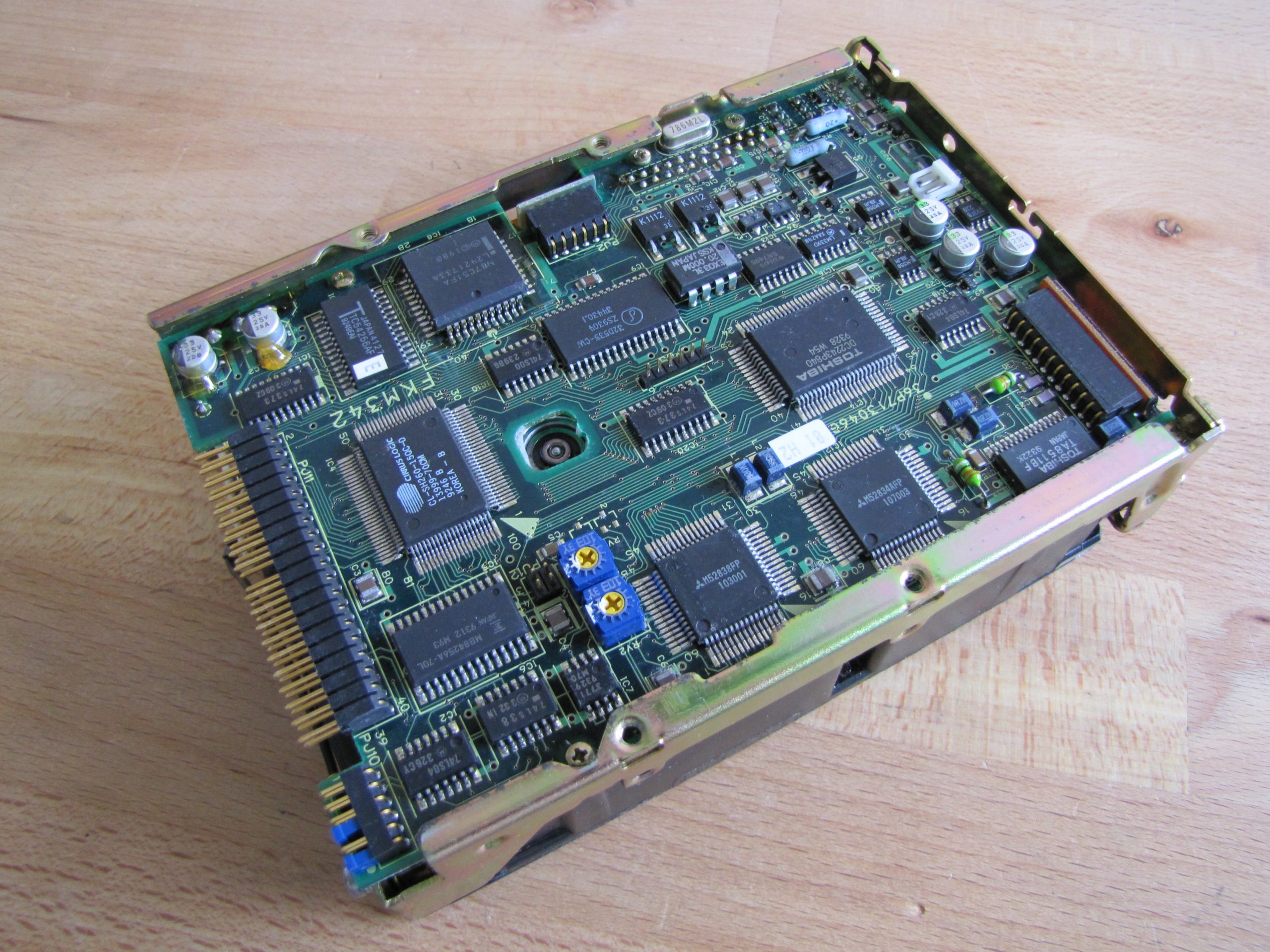
Both drives have identical PCB’s, so we’ll just dive into one of them. Please note, a capacitor is missing off of this one (on the top side, to the left of the J8 header). It seems the previous owner of these drives hot glued these caps back on, which apparently seemed to work well enough, since they both turn on just fine. Obviously, that’s one hell of a bodge job. The one in the picture above no longer turns on however, since I stole the cap on this drive to test the other one. Sadly, they’ve both failed in the exact same way.
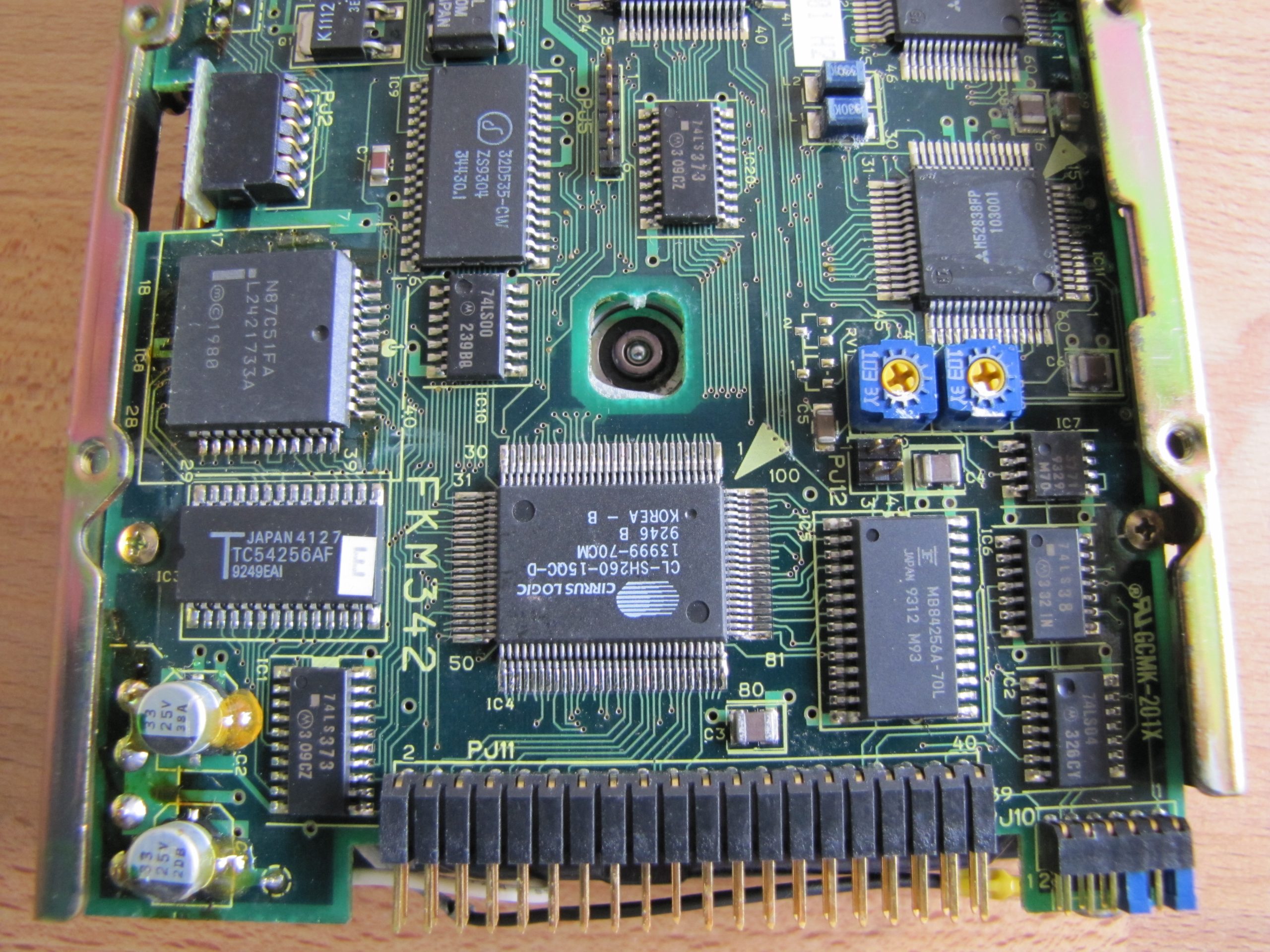
Here we can see more of that lovely hot glue. The IDE connector is one of the earliest, without an external housing and lacking in key markings. It’s very easy to plug in an IDE cable the wrong way round. There’s many IC’s on this board, to name a couple most obvious ones, the Cirrus Logic CL-SH260-15QC-A microprocessor in the centre and the Fujitsu buffer RAM IC on the right.
Importantly, many IC’s state a manufacture date of early 1993, which pinpoints the exact production date for this drive. Toshiba kept this design around for a while, but seemingly ended production prior to 1994.
The J10 header on the right of the IDE connector has the following pinout:
--------------------------
PJ10 Header Definition
--------------------------
+---+
1 |o o|2 LED
3 |o o|4 SLV_PRS
5 |o o|6 MST/SLV
7 |o o|8 DRV_PRS
9 |o o|10 TEST1
11|o o|12 TEST2
+---+
--------------------------
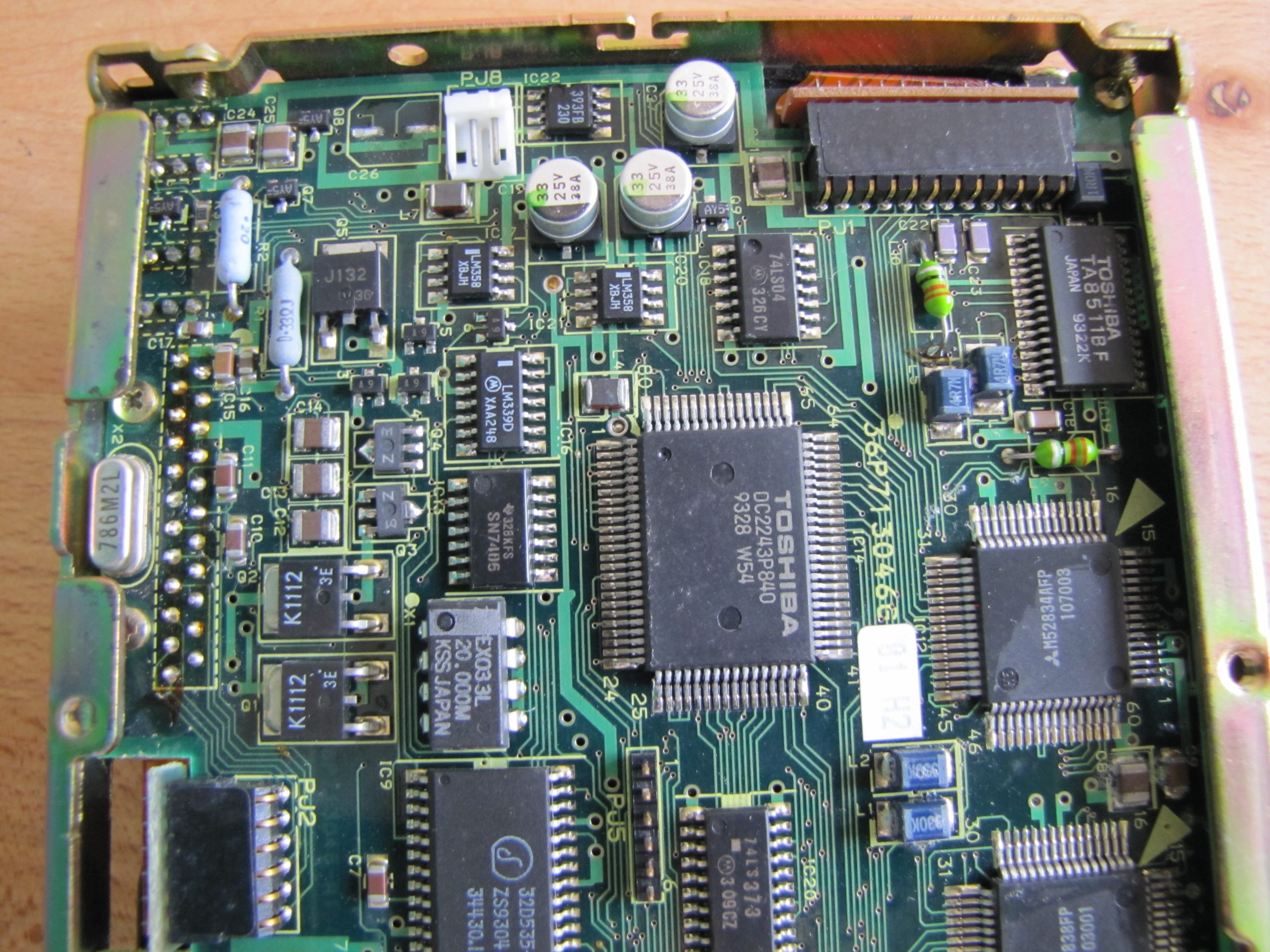
The spindle motor connects to the PCB through the PJ2 connector, seen on the bottom-right of the image above. PJ1 is the connection to the head-stack assembly. Here we can see the missing capacitor, found at point C26. We’ve got a custom Toshiba IC here in the centre, but sadly there’s not much documentation to be found.
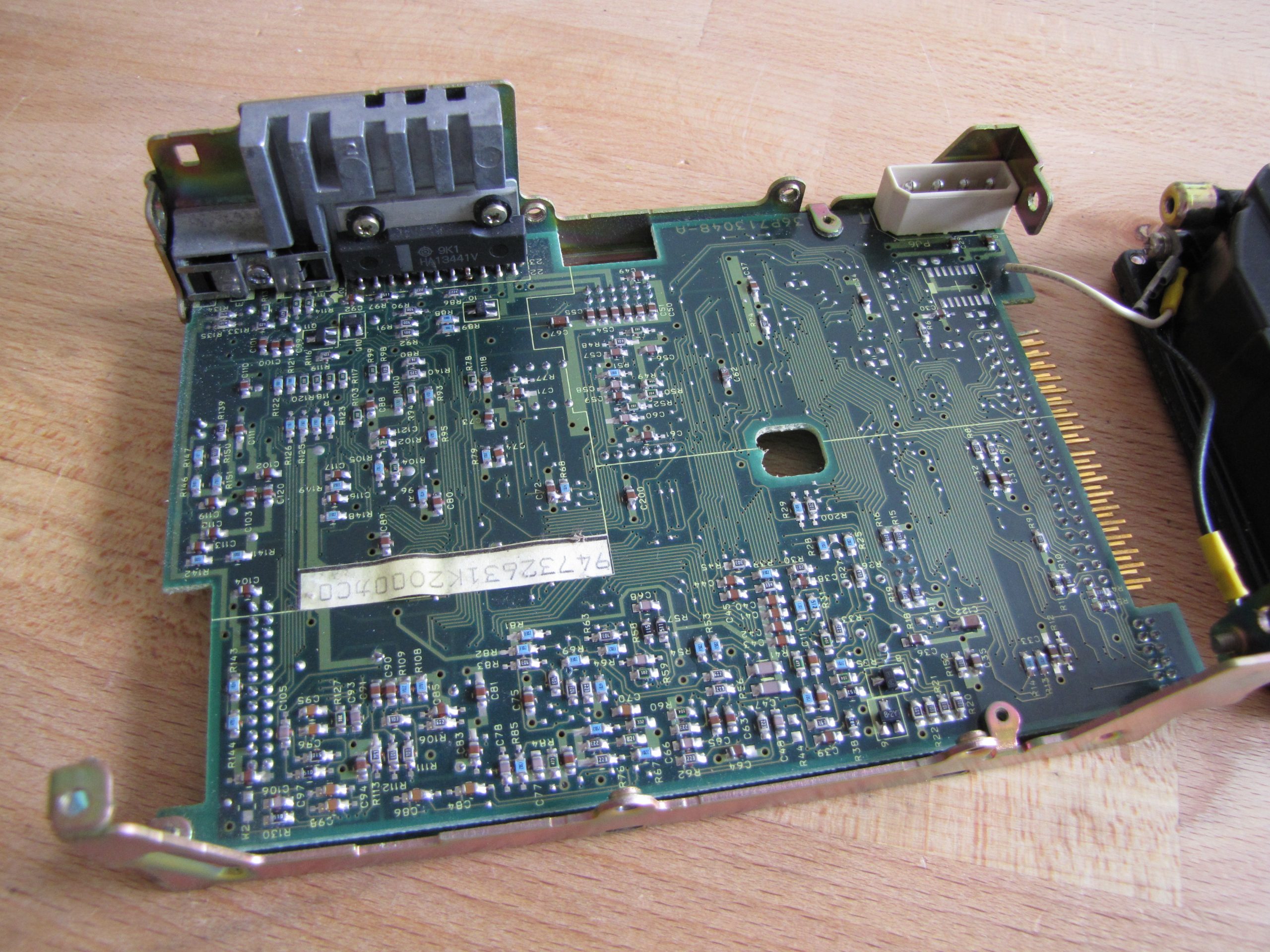
Taking the PCB off of the drive itself required some rather intricate disassembly of the drive’s shock mount system, but it wasn’t too troublesome fortunately. The only main outstanding point here is the rather chunky three-phase DC motor driver, manufactured by Hitachi (part IC. HA13441V). Once again, we can see the ridiculously annoying molex connector placement.
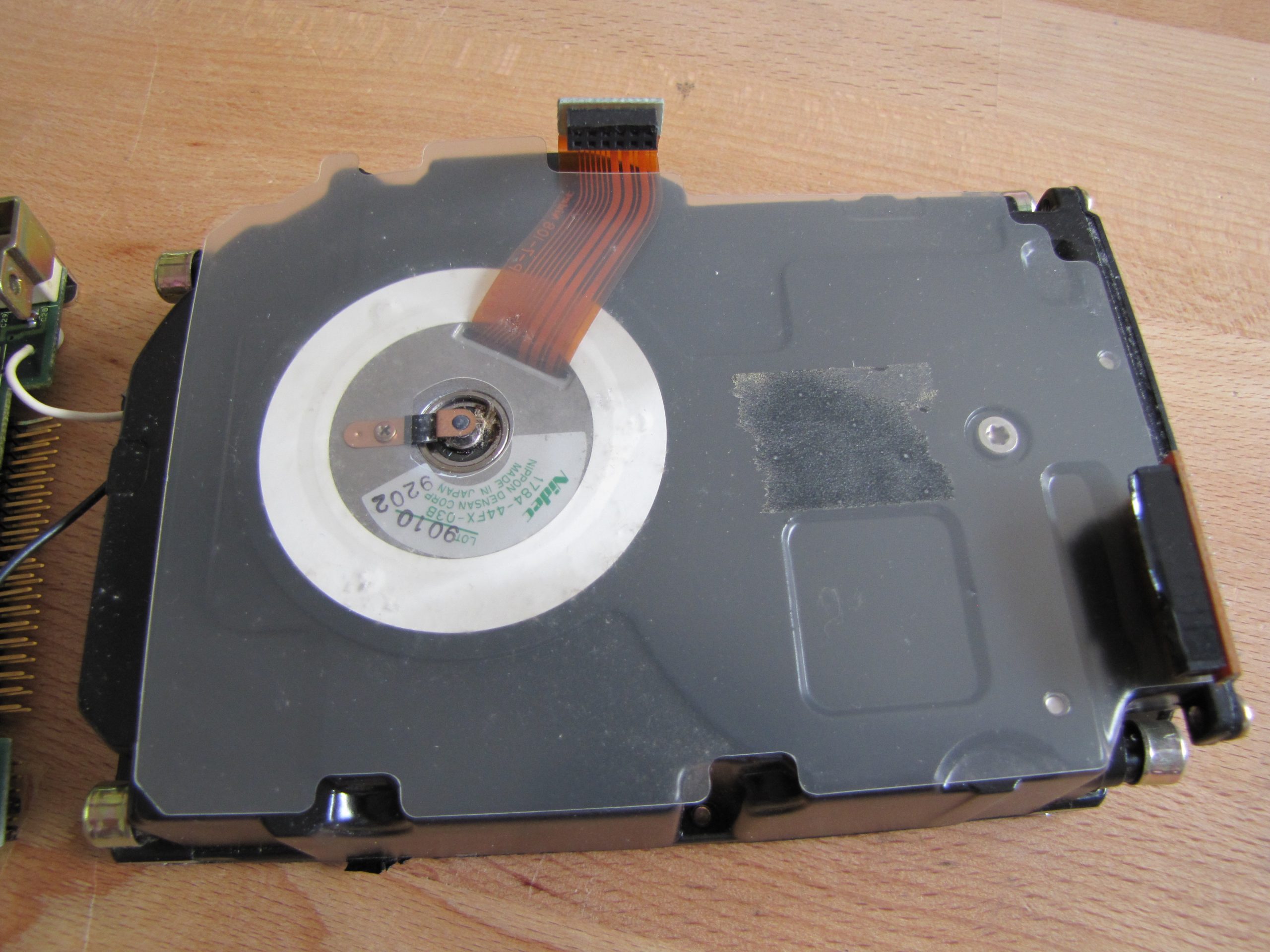
The backside of these drives is very clean and classy. We can see the biggest player in the spindle motor market during the 80’s and 90’s, Nidec, making their name here once again. Nothing else particularly stands out, but the isolation plastic seems to be quite well laid out. The spindle motor hails from early-1992. Since we’ve had a good look at the outside, let’s dive inside this drive for a closer look.
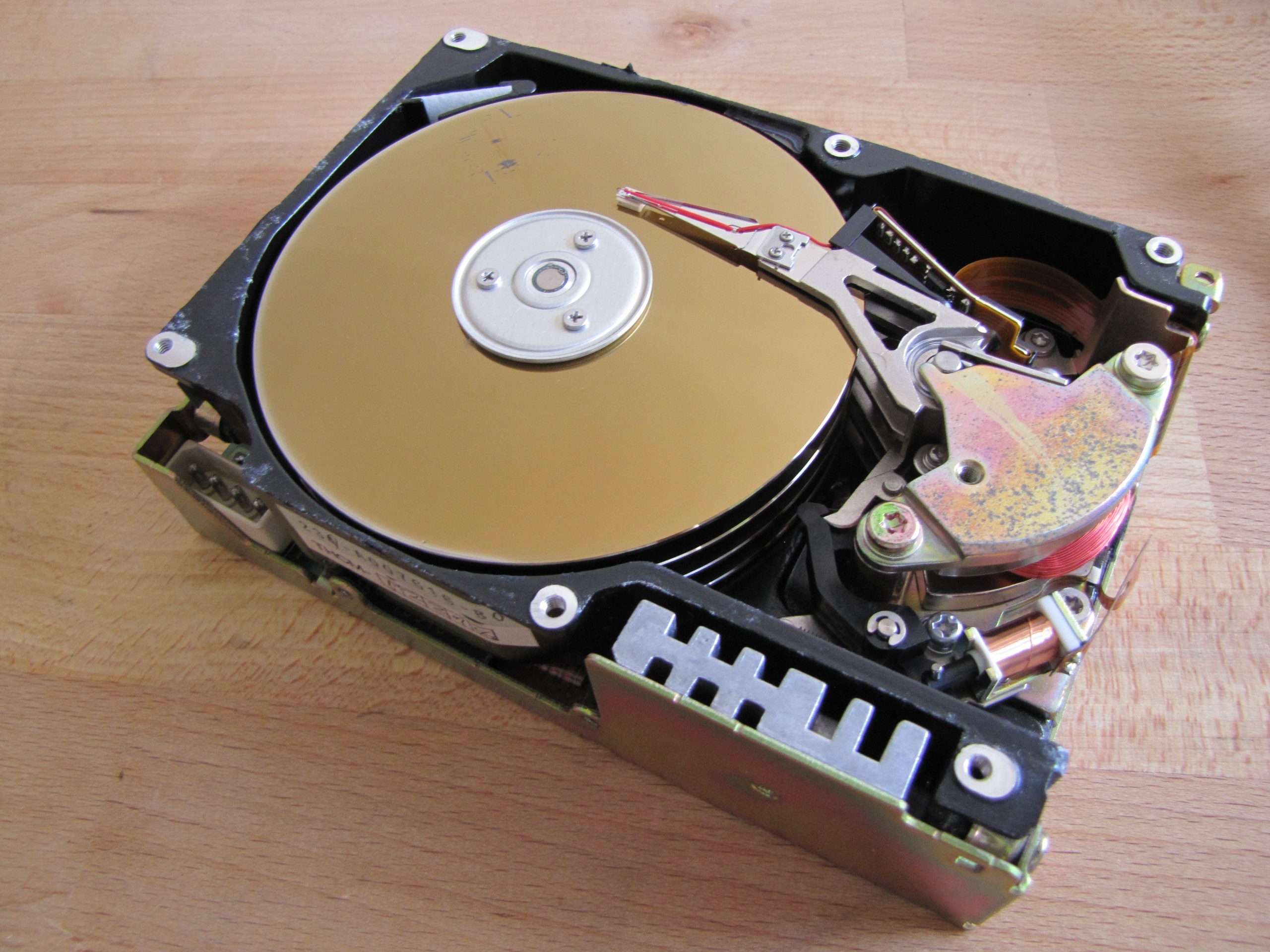
There’s quite a lot going on here, so it’s time to go through this thing step-by-step.

While initial expectations warranted an outcome of these being dead as a result of shipping damage, this is clearly not the case. The coating of the platters itself has started to corrode and rust, which obviously isn’t ideal. This is somewhat worrying, in terms of future longevity of the functional MK-232FC. As a result of this degraded surface coating, the drive has had a head-crash on several platters, with the same issue.
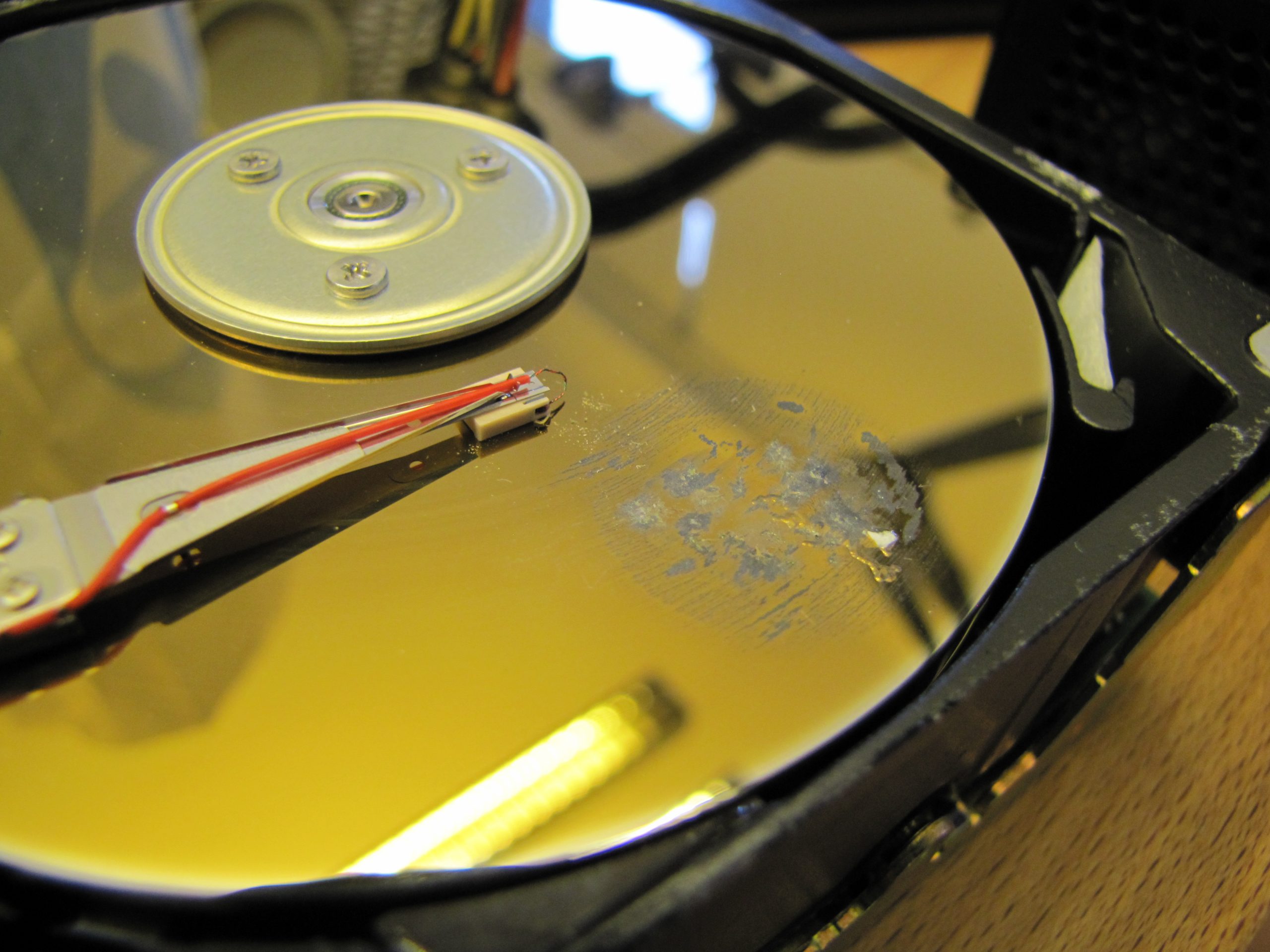
The story gets even worse when analysing the other failed drive. The surface adhesion is quite poor on these it seems, where this one has material flaking off the platter. It exhibits identical behaviour to the drive analysed in this post, the failure mode being the same. Fortunately, Toshiba seemed to improve on this element pretty quickly.

Here we can see all four platters on this drive. The levels of engineering that went into drives such as these is truly incredible.

The coil windings on this voice-coil driven head stack assembly are pretty chunky. Here we also get the first look at the head stack solenoid lock/unlocking system, which was a fairly common way of locking heads in place throughout the 90’s. This was something that can also be seen in the early 2000’s pre-IBM Hitachi DK-series SCSI drives, alongside numerous other models over the years.
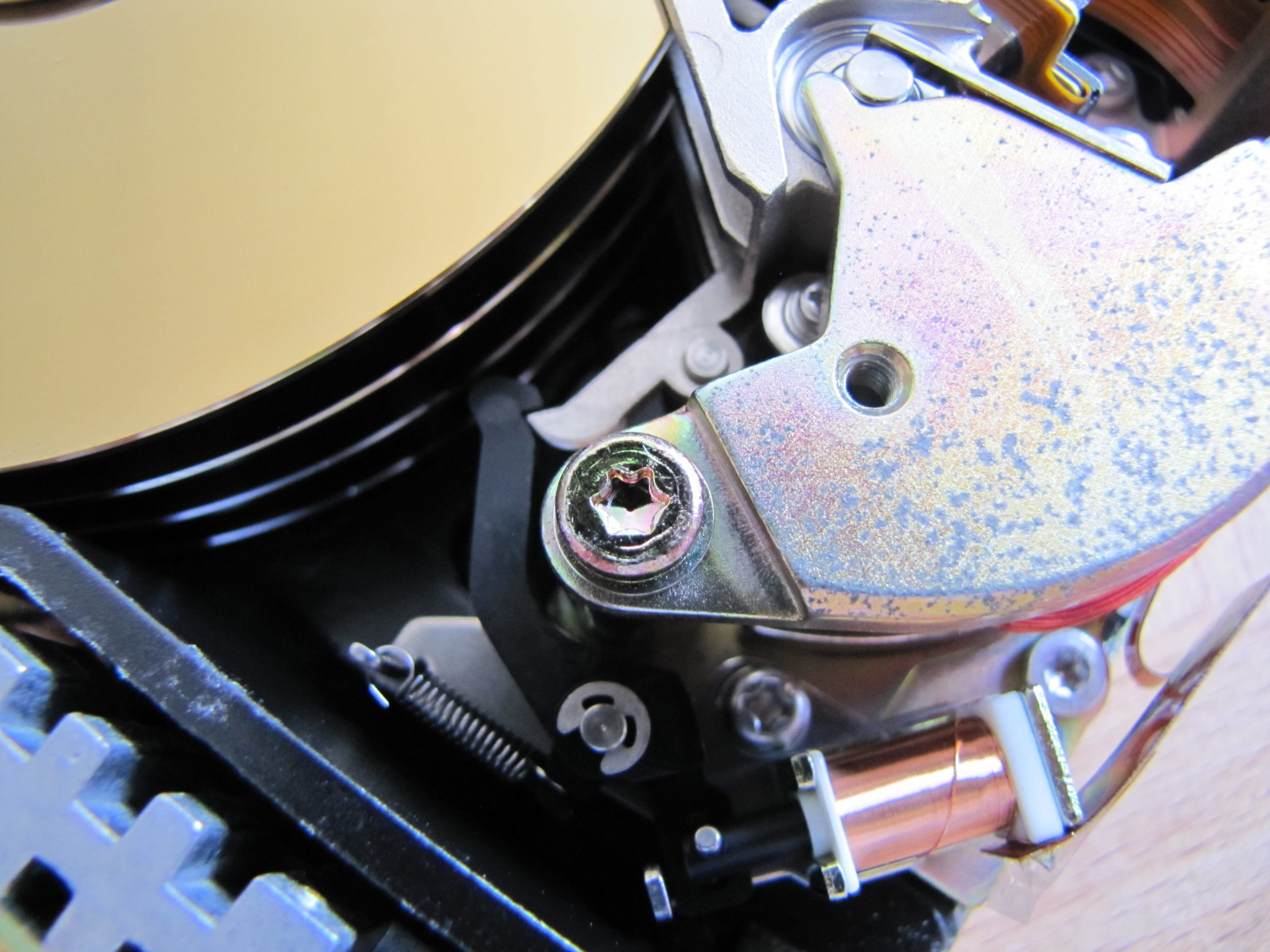
Here’s a good look at the locking mechanism for the read/write heads. The solenoid connects to an extended arm, which them locks into another arm connected to the head stack.
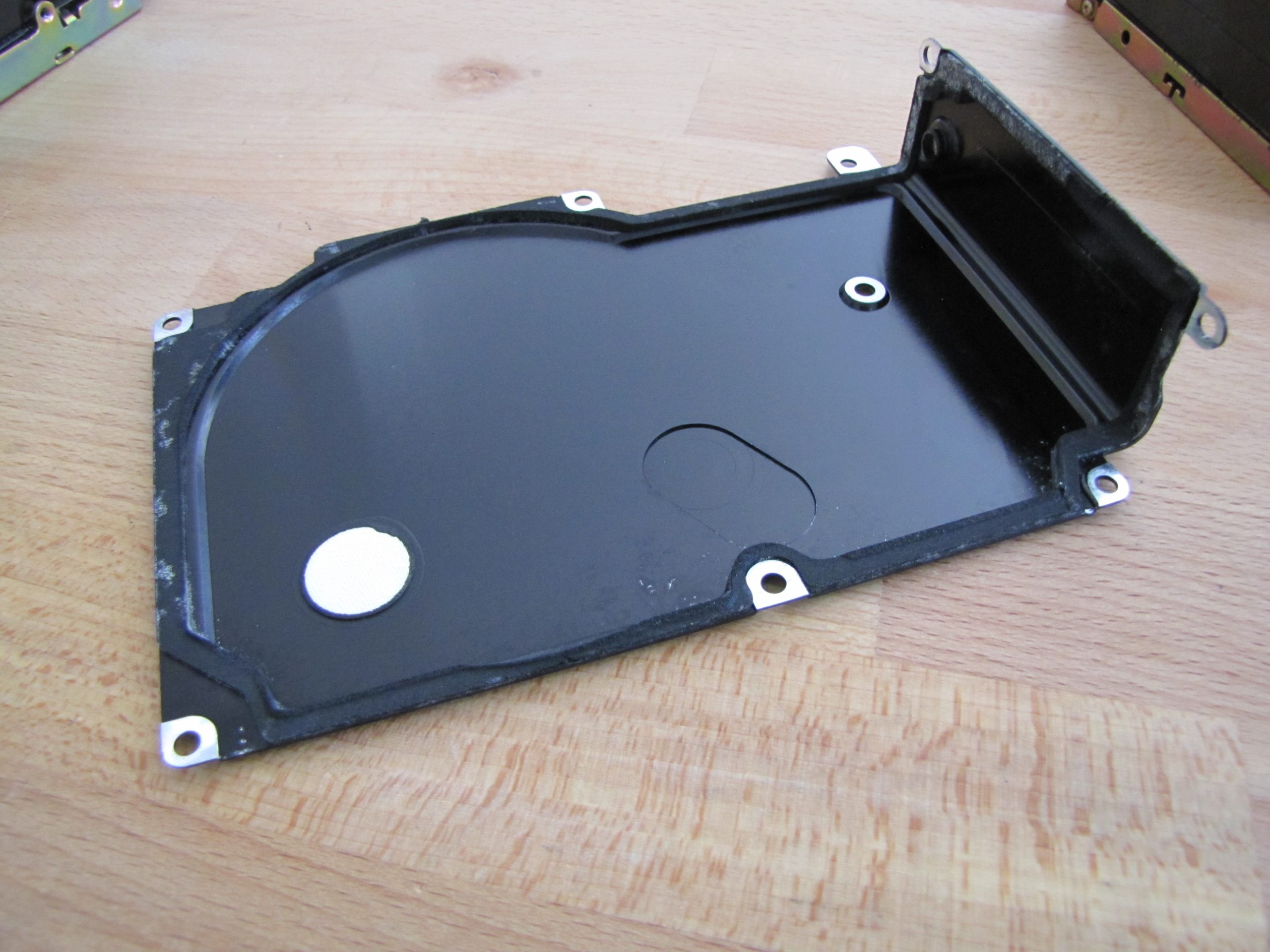
Let’s finish up this deep-dive with a look at the top cover. The air filter is sneakily hidden, which might not be noticable at a first glance. This drive is made of what Toshiba describes as an aluminium-alloy.
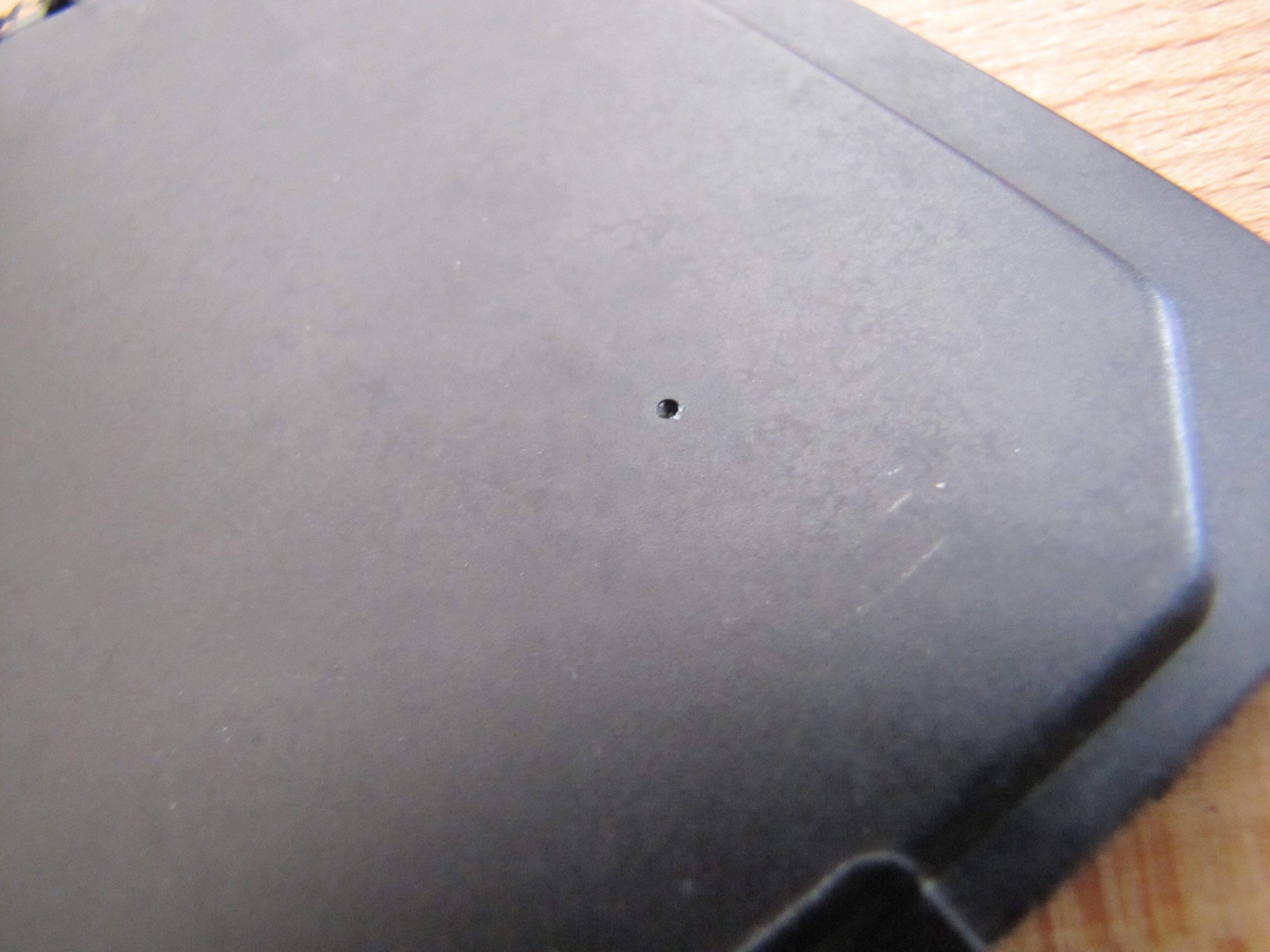
There’s the guy, the hidden air filter.
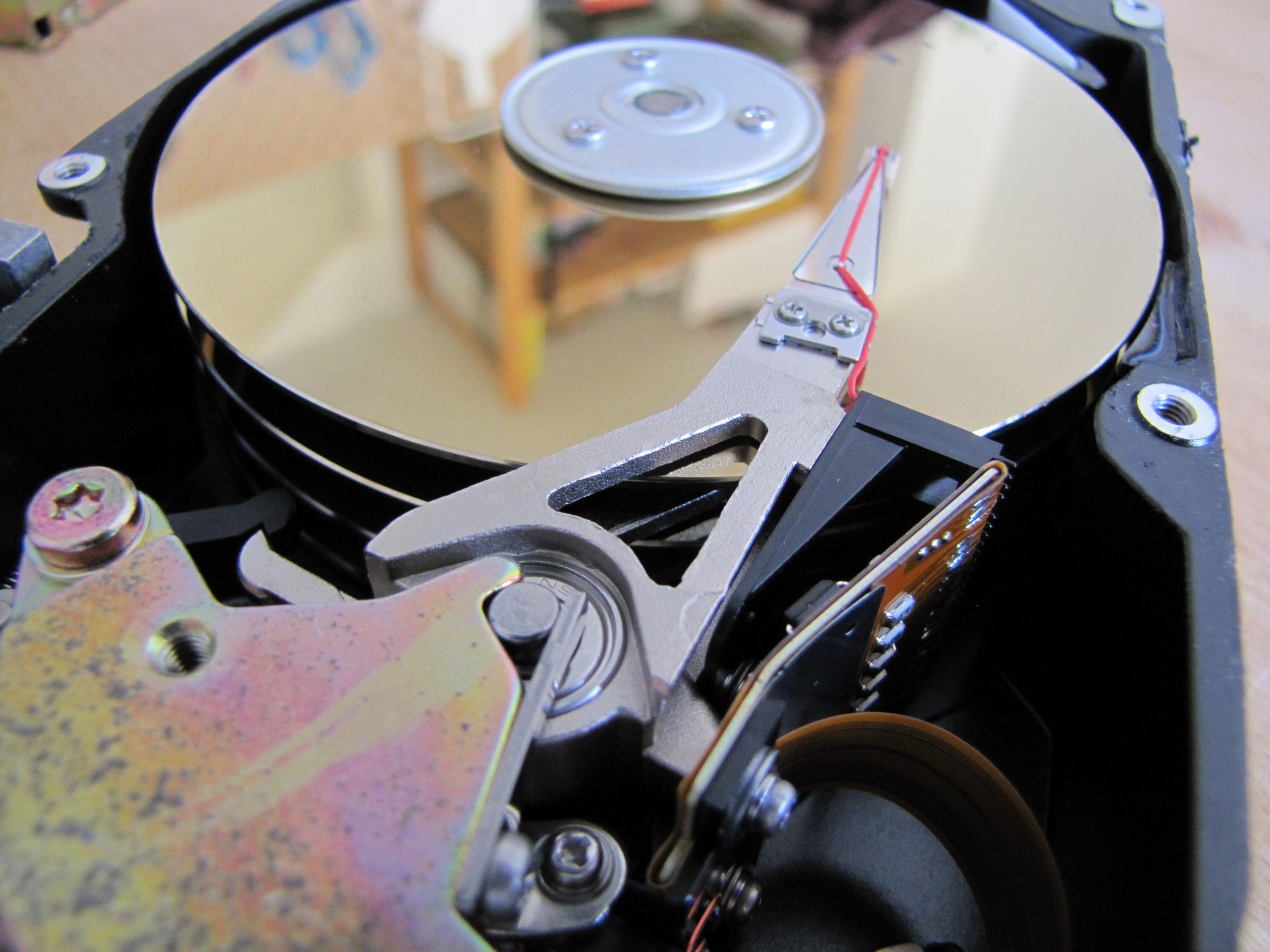
So, there we have it. An insanely rare and difficult to find early IDE drive from Toshiba. While it’s unfortunate that these drives are dead, at least we can have a look into these in depth. I haven’t found any other images of the insides of these on the internet, so I hope you enjoyed having a look along with me!
If you missed the video I made on this drive, you can find it here: